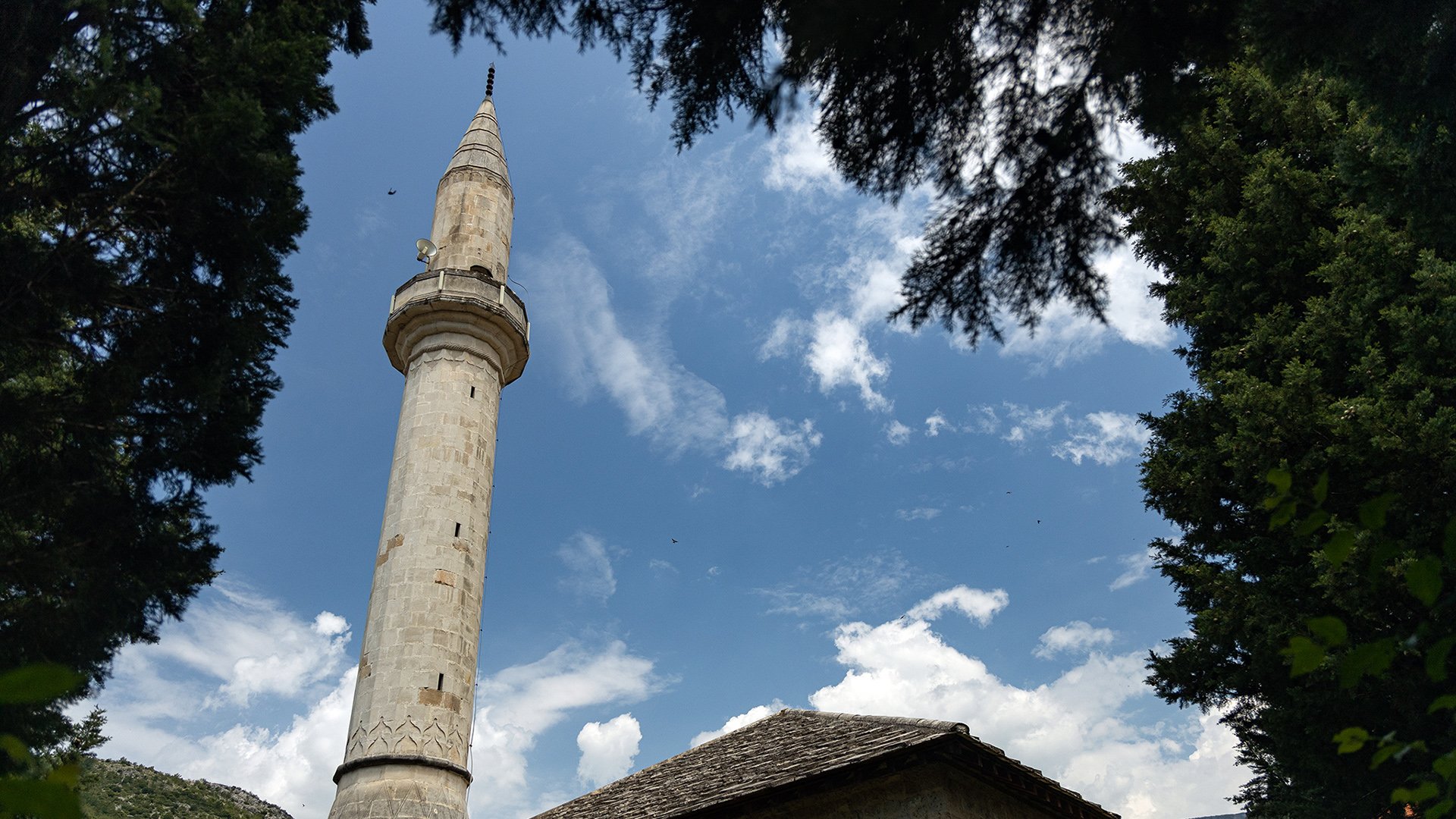
SULTAN SELIM’S MOSQUE FROM XVI CENTURY IN STOLAC
The culture of Islam in Bosnia and Herzegovina is primarily an urban culture. With the advent of Islam, Bosnian cities preserved their multi-religious character and were environments in which Muslims, Catholics, Orthodox and Jews lived, cooperated and met daily.
Author: Ekrem Tucaković, PhD, Riyasat of the Islamic Community in Bosnia and Herzegovina • Photo & video: Mirza Hasanefendić
Čaršija Mosque in Stolac, i.e. the Sultan Selim Mosque, is one of the oldest mosques in Herzegovina. Together with the building ensemble Stolac Čaršija (marketplace) it was declared a national monument of Bosnia and Herzegovina in 2003. The national monument consists of the mosque ensemble: the mosque, courtyard with shadervani, a well and the graveyard, the space of former maktab, musafirhana (inn), 15 shops, kiraethana, gusulhana, Great Tepa (market square) with the building of tepica. The architectural ensemble -the Čaršija Mosque and Čaršija in Stolac is lies in the center of the city, immediately below the fortified Old Town of Stolac.
The Čaršija Mosque was built in 1519 and is the oldest known bigger building in the Stolac Čaršija. The dimensions of the mosque are 18,30x15,30 m. The way of its building clearly reveals the continuation of medieval building style in Bosnia and Herzegovina. It was built of semi-dressed stone. The walls are about 90 cm thick. The mosque has a hipped roof with wooden roofing. Against the right wall of the mosque, immediately next to the sofas, there is a dodecagonal minaret of ashlar stone, 25.80 m high. The minaret is decorated with double rows of stylized tulip flowers. A maktab was erected next to the Šaršija Mosque and a courtyard was made around it.
To the northwest from entrance to the mosque, on an area bordered with shops and the musafirhana, agricultural produce was traded. This space is called tepa. Like in most marketplaces in Bosnia and Herzegovina, contents of sacral, public charity institutions, craft shops, stores and farmers' market intermingled there. The historical founding and development of public institutions, charity institutions, public, trade, manufacturing and other facilities which made up Stolac Čaršija, is related to the establishment of waqfs. Among waqifs from Stolac, the most significant endowments were left by Silahdar Husein-pasha, hadži Salih Buro, Ismail-captain Šarić, hadži Alija Hadžisalihović and Ali-pasha Rizvanbegović.
Besides the mosque, the most important building in Čaršija is the musafirhana (inn), which belongs to the waqf of the greatest known Stolac waqif Silahdar Husein-pasha from the famous family of Stolac captains, the Šarićs. Silahdar Husein-pasha commissioned ten shops around the musafirhana, and rent from them was used to provide food for travelers and maintenance of the musafirhana.
The old well in front of the mosque is 11 m deep. The courtyard was changed after destruction and expropriation. The shadervani in front of the mosque was commissioned by hadži Salih Behmen in 1909. It was built of stone and consisted of a small pool the water of which flew into a larger pool and, from it, through eight faucets. Gusulhana lies in the courtyard of the mosque, where it was interpolated in 1967. The building is accessed from the street and from the front yard, which allows uninterrupted performance of religious rituals. Kiraethana (reading room) opened in the 19th century, worked in a room on the upper floor next to the clock tower. The clock tower was built next to the kiraethana, about fifty meters to the east of the mosque, and dates back to the 17th century.
In the summer of 1993, the Čaršija Mosque and the whole Stolac Čaršija were razed. The mosque was renewed in 2002, and it was followed by the renewal of other facilities.
Reference:
Commission to Preserve National Monuments of Bosnia and Herzegovina: http://old.kons.gov.ba/main.php?id_struct=6&lang=1&action=view&id=1824



























